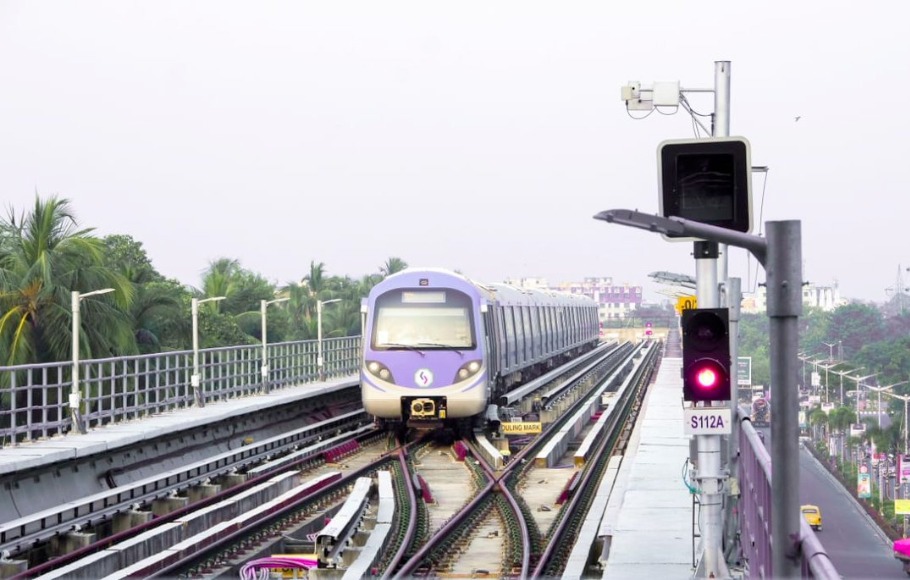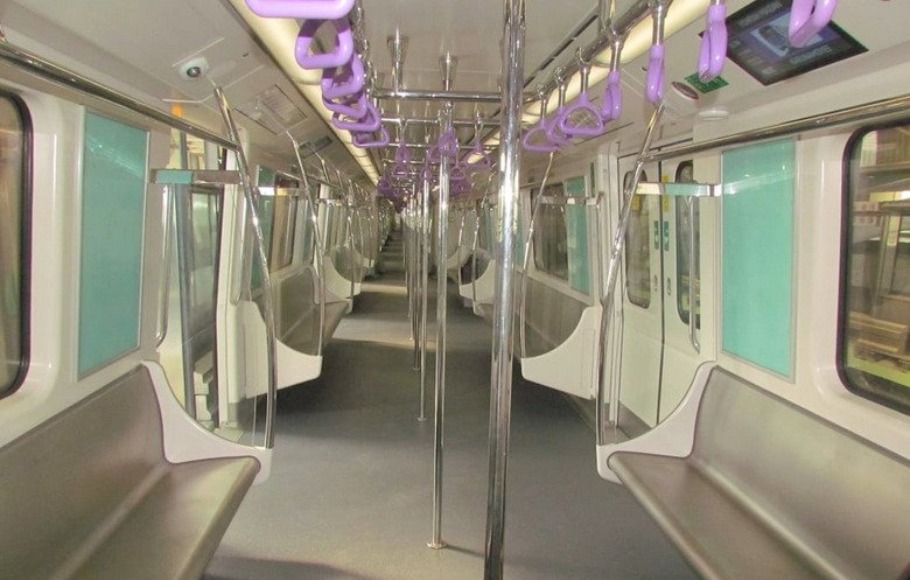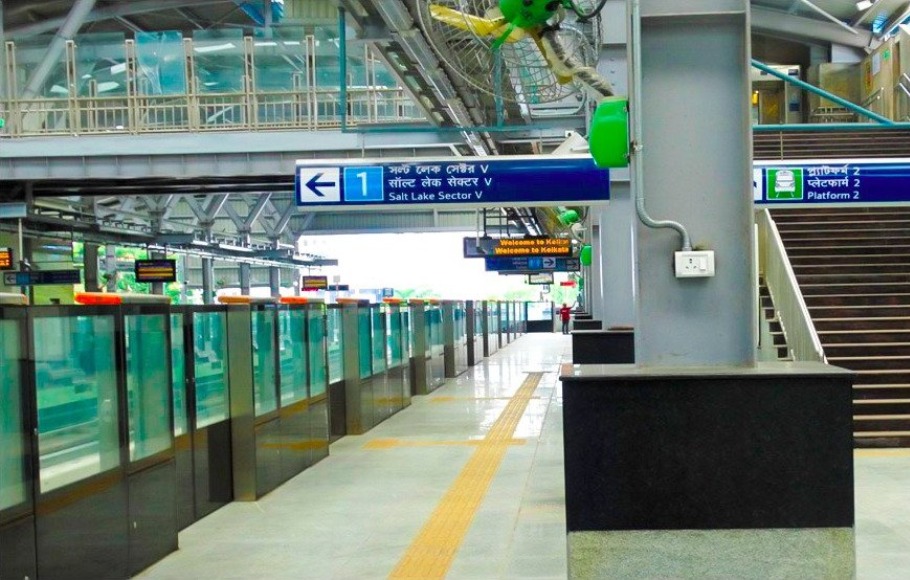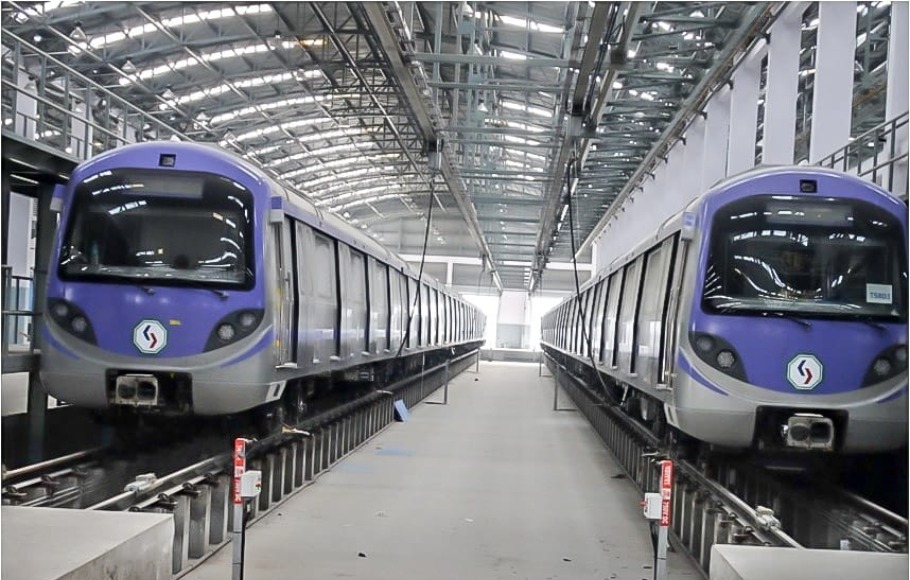
All you need to know about India's first underwater metro
An engineering marvel is what the East-West corridor of Kolkata metro railway is being referred to as while the City of Joy prepares for the country's first underwater ride. This second route of India's first metro will connect Kolkata with Howrah through an underwater river tunnel.

An engineering marvel is what the East-West corridor of Kolkata metro railway is being referred to as while the City of Joy prepares for the country’s first underwater ride. This second route of India’s first metro will connect Kolkata with Howrah through an underwater river tunnel.
Railway minister Piyush Goyal on February 13 inaugurated the route that connects Salt Lake’s Sector V with Howrah Maidan, a stretch of 16.5 km. This includes a 5.8 km elevated corridor and 10.8 km underground section, which includes a 520 metre twin tunnel under the Hooghly river.
However, only the first phase, connecting Sector V and Salt Lake Stadium, was thrown open to the public on February 14. The entire stretch, including the underwater section, is likely to be completed in two more years. Upon completion, it will be India’s first underwater metro route.

Launched in 1984, Kolkata metro was the first underground rapid transit system in India. It was inaugurated by the then Prime Minister Indira Gandhi and catered to the north-south route, connecting Dum Dum with Tollygunje. In 2009-2010, the route was extended to Noapara and Garia.
The 520-metre twin tunnels that connect the two cities are built 30 metre below the riverbed. Reports suggest it will take about a minute for commuters to cross the river when the train passes through the tunnel at 80 km/hr. Usually, a ferry ride across the river takes about 15 minutes and by road it can take up to half an hour.
According to the railway minister, about ₹6,500 crore has been spent so far on the east-west corridor of the Kolkata metro. He said the project, which began in 2009, was stalled from 2012 to 2015 on the “pretext of route realignment”. The delay resulted in cost escalation, said the minister.
An engineering marvel
The twin tunnels that run underneath the Hooghly river were dug by Afcons Infrastructures Limited, which has also done tunnelling for three of the total six functional metro stations in the east-west route — Sector V, Karunamoyee, Central Park, City Centre, Bengal Chemicals, Stadium.
According to a senior Afcons official, this was the first time they had to execute a proper evacuation plan, which was not required in the metro projects they have been working on in Chennai and Ahmedabad. He said several measures were also taken to minimise the impact of tunnelling work on nearby buildings.

Besides, the most challenging aspect of the underground tunnelling work was the presence of several old and dilapidated buildings in the area. The nearby areas where tunnelling work was undertaken included several vulnerable houses, three heritage structures and two ASI monuments.
In fact, the tunnelling work did take a toll on buildings in central Kolkata’s Bowbazar area, further delaying the completion of the entire stretch. Many houses collapsed while several others developed cracks last September. Over 50 families were also evacuated from the area fearing more cave-ins.
What’s new this time?
The East-West metro section comes loaded with new amenities that were not available in the old north-south route. The new route has washrooms in the passenger areas of the stations, which was a major lacking in the old route. Besides, train doors in this route are wider than those in the north-south route.

This is also the first time platform screen doors were installed in order to prevent suicides and accidents. Also, the doors help passengers know the position of the train doors. In the north-south line, due to lack of platform doors, passengers have no clue where the doors would be and that results in commotion.
Reports suggest announcement in the new route have more clarity, besides having information display boards in all the coaches and at platforms. The information regarding stations and timings are displayed in English, Bengali and Hindi. In this route, the first trains in both directions start at 8 am, and the last ones at 8 pm.
Related news: Mamata uninvited, TMC leaders boycott East-West metro launch


